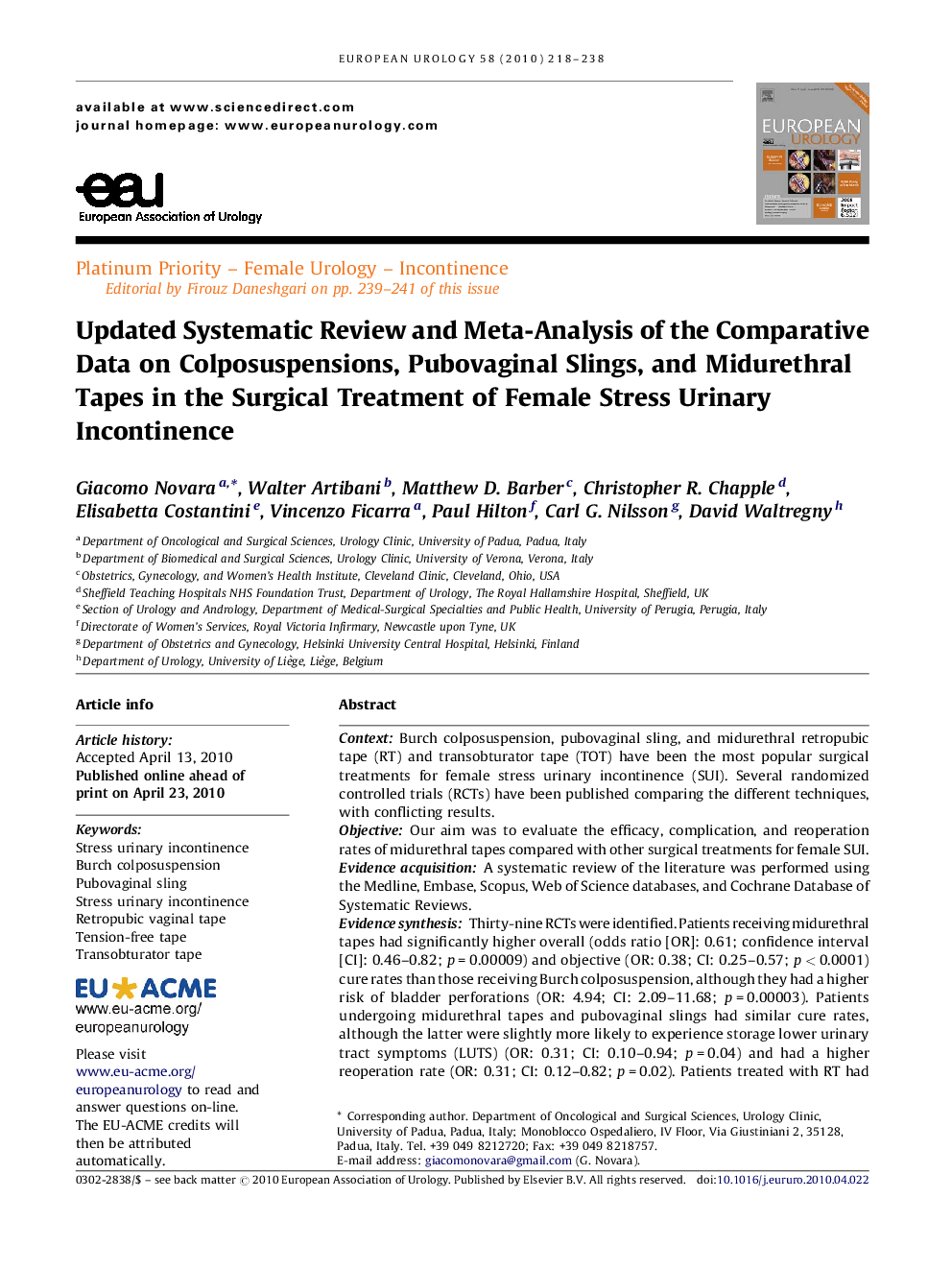| Article ID | Journal | Published Year | Pages | File Type |
|---|---|---|---|---|
| 3927744 | European Urology | 2010 | 21 Pages |
ContextBurch colposuspension, pubovaginal sling, and midurethral retropubic tape (RT) and transobturator tape (TOT) have been the most popular surgical treatments for female stress urinary incontinence (SUI). Several randomized controlled trials (RCTs) have been published comparing the different techniques, with conflicting results.ObjectiveOur aim was to evaluate the efficacy, complication, and reoperation rates of midurethral tapes compared with other surgical treatments for female SUI.Evidence acquisitionA systematic review of the literature was performed using the Medline, Embase, Scopus, Web of Science databases, and Cochrane Database of Systematic Reviews.Evidence synthesisThirty-nine RCTs were identified. Patients receiving midurethral tapes had significantly higher overall (odds ratio [OR]: 0.61; confidence interval [CI]: 0.46–0.82; p = 0.00009) and objective (OR: 0.38; CI: 0.25–0.57; p < 0.0001) cure rates than those receiving Burch colposuspension, although they had a higher risk of bladder perforations (OR: 4.94; CI: 2.09–11.68; p = 0.00003). Patients undergoing midurethral tapes and pubovaginal slings had similar cure rates, although the latter were slightly more likely to experience storage lower urinary tract symptoms (LUTS) (OR: 0.31; CI: 0.10–0.94; p = 0.04) and had a higher reoperation rate (OR: 0.31; CI: 0.12–0.82; p = 0.02). Patients treated with RT had slightly higher objective cure rates (OR: 0.8;CI: 0.65–0.99; p = 0.04) than those treated with TOT; however, subjective cure rates were similar, and patients treated with TOT had a much lower risk of bladder and vaginal perforations (OR: 2.5; CI: 1.75–3.57; p < 0.00001), hematoma (OR: 2.62; CI: 1.35–5.08; p = 0.005), and storage LUTS (OR: 1.35; CI: 1.05–1.72; p = 0.02). Meta-analysis demonstrated similar outcomes for TVT-O (University of Liège, Liège, Wallonia, Belgium) and Monarc (AMS, Minnetonka, MN, USA).ConclusionsPatients treated with RT experienced slightly higher continence rates than those treated with Burch colposuspension, but they faced a much higher risk of intraoperative complications. RT and pubovaginal slings were similarly effective, although patients with pubovaginal slings were more likely to experience storage LUTS. The use of RT was followed by objective cure rates slightly higher than TOT, but subjective cure rates were similar. TOT had a lower risk of bladder and vaginal perforations and storage LUTS than RT. The strength of these findings is limited by the heterogeneity of the outcome measures and the short length of follow-up.
